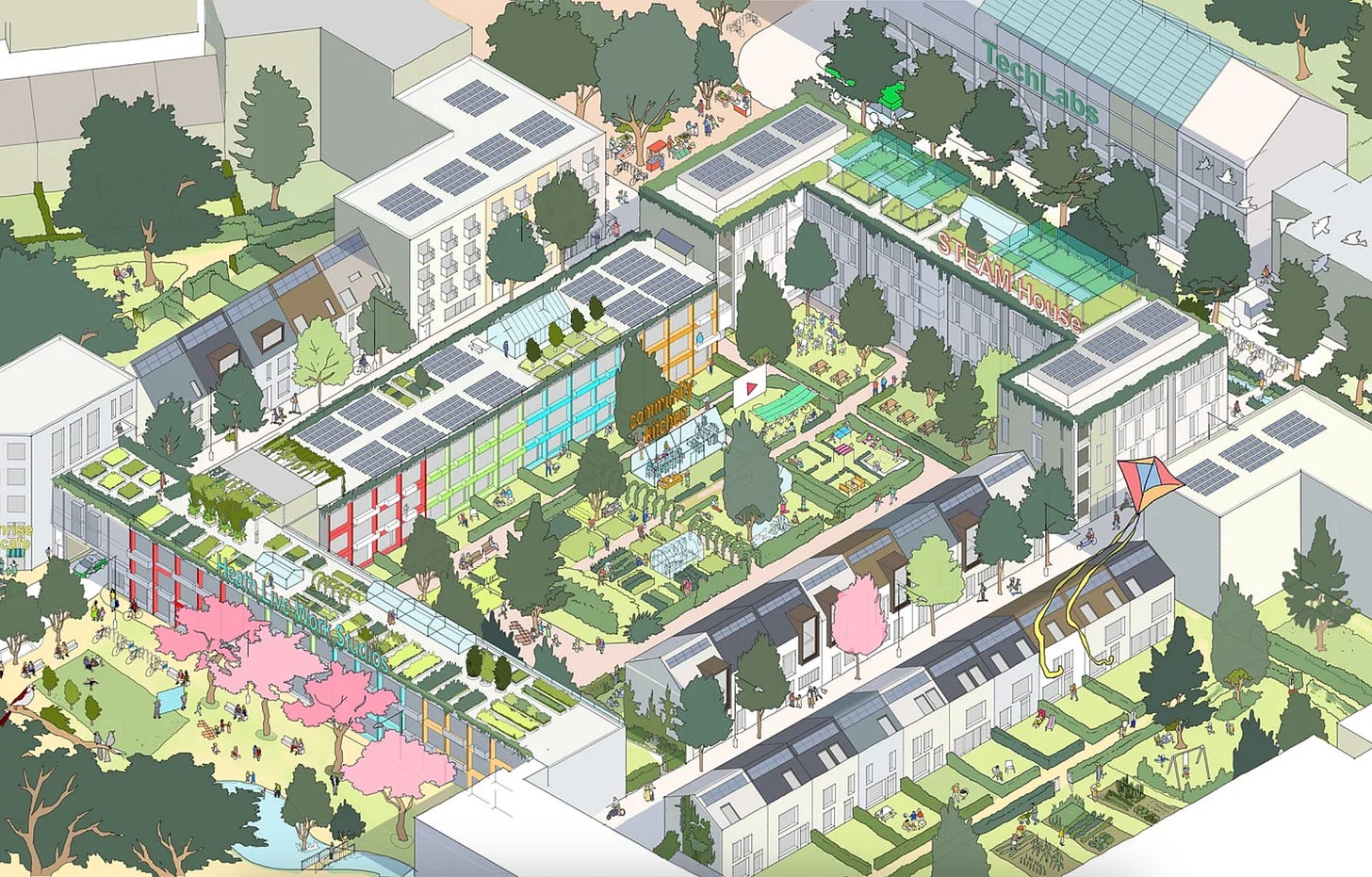How to design places in tune with natural systems (EcoResponsive Environments)
A new perspective on masterplanning
Achieving ‘sustainability’ can often feel like it’s about incremental improvements. Improving energy efficiency. Using lower carbon materials. Planting more trees. It’s not often that someone rises to the task of fundamentally rethinking how we plan and design our places. Yet the scale of the climate and biodiversity crises demands this kind of transformative thinking.
‘EcoResponsive Environments’, a design philosophy, book and urban design studio rolled into one, is a rare example of this transformative and radically optimistic thinking. I sat down with co-authors Prachi Rampunia and and Soham De to discuss the concept of designing settlements with an understanding of natural systems as the starting point. They bring together the knowledge of multiple disciplines like sustainability, landscape ecology and water management and present it in a useful way for designers.
I need to stress: This isn’t a conversation about theory. Over the 10+ years they spent researching and writing the book, they also tested their ideas in practice on a number of high profile masterplans (the image at the top is an example of one).
Listen to our podcast episode to learn:
The essential aspects of natural systems that designers need to understand as the starting point for their design process.
How designing with natural systems builds resilience, fosters sustainable lifestyles and benefits our health.
How nature-centric design can be delivered without sacrificing economic value (this isn’t just for one-off, philanthropic projects).
The role of placemaking in creating sustainable places.
Listen to the episode on the links below:
I particularly enjoyed their story of how they applied the principles of EcoResponsive Environments in their competition-winning entry for the Heath Park, Runcorn masterplan in complex commercial context. Listen towards the end of the episode for that.

